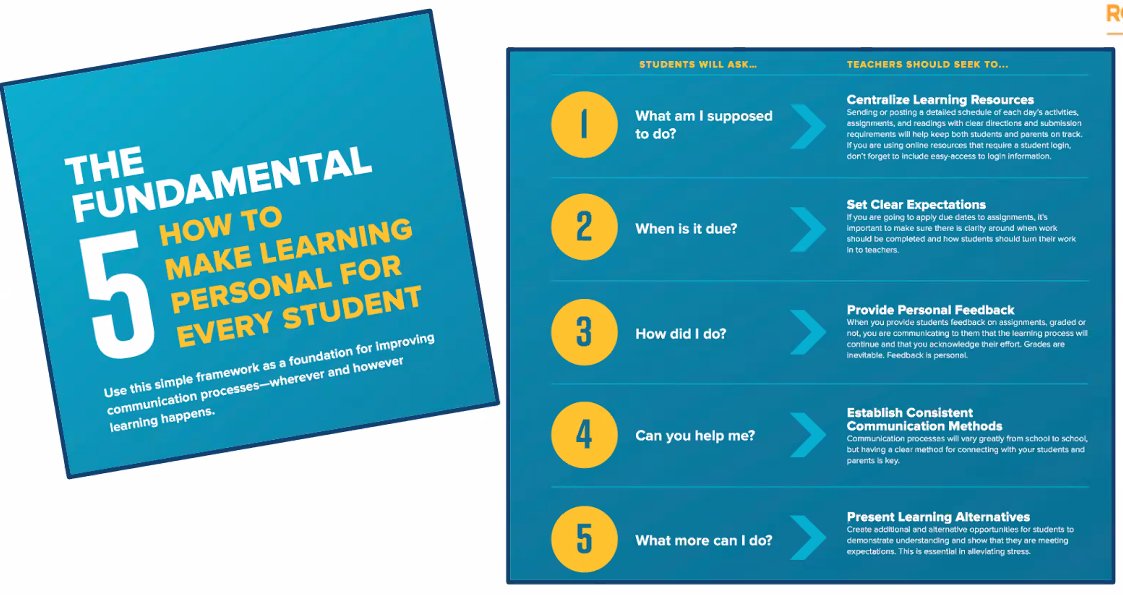Addressing Learning Loss: Using Connected Assessments & LMS
Tips for effectively collecting data and offering personalized learning in remote, hybrid, and in-person teaching.

Data can be powerful even in a pandemic when used correctly.
That was one of the messages from educators during this recent Tech & Learning virtual roundtable hosted by Dr. Kecia Ray. The virtual event focused on preparing students for their futures with the help of formative assessments to meet each student where they are so that teachers can adjust their instruction and personalize it.
Watch the on demand version here.
Key Takeaways
Make Assessments Count
“I've always believed that if you are going to solicit data from students you have a moral obligation to actually use that data to benefit those students,” said Trenton Goble, vice president of K-12 Strategy for Instructure, the developer of Canvas LMS. “If you're not using it, if it's just a tool to put a score in a grade book and we're not actually using that information to identify student levels of understanding, we're not using it to target students for intervention. We're not using that data to self evaluate our own instructional efficacy, we're missing out on I think the core elements of what it means to assess kids.”
Gretta Rogne, director of digital learning at New Caney ISD in Texas, said that the pandemic has helped educators in her district really focus on getting actionable data about student performance. “Covid has really shone a light on how teachers are assessing the classroom, and it's really making them think more in terms of, ‘Are my assessments giving me feedback from the kids? Are they something that I can use to find out where the kids are in terms of their levels?’”
Get Students Involved
Tech & Learning Newsletter
Tools and ideas to transform education. Sign up below.
Over the past few years, New Caney ISD has focused on getting students to look at their data and learn from it just as their teachers are. “It's really important for the students to take ownership of that data, and to also have the transparency to see how they're performing,” Rogne said.
In the past, grades have been a mystery to students, with a letter or number telling them little about what skills they had and what skills needed improvement. “We're really looking at aligning things to our standards, and not only having teachers look at that but also making sure that our students are actually able to see that data as well,” Rogne said. “So they know that they are being successful, and they know their areas of growth and improvement. They're really able to see where they are.”
Use Your LMS to Create Personalized Learning
To gather the right type of data you need an effective LMS.
“A lot of people look at the LMS and say, you know, it's about personalized learning, or it's about one-to-one initiatives, or it's about all of these other things,” said Goble. “Ultimately, this work that we do is really about finding ways to make learning personal for each of our kids and providing opportunities for teachers to engage in that.”
Rogne said New Caney ISD chose Canvas after a year-and-a-half search. “One of the biggest things for us in selecting a platform partner was their ability to change, to listen, and to grow with us,” she said. “Everything is constantly moving and shifting for the better.”
Learning From the Pandemic
“My fear is that teachers have worked really hard, and they are really tired, and they've invested a lot, and had to acquire a lot of new skills. I think there may be a tendency for some to say, ‘I just can't wait to get back in my classroom and stop doing some of those technical things,’” Goble said. “Teachers have worked too hard to bring this content to an environment that allows students to have access to it at any time. When we come back together, we will always have students who will benefit from being able to know what they're supposed to do when things are due. And that doesn't go away. It is good practice that I hope stays with us.”
Rogne said that following the pandemic, her district will continue to use data in more efficient ways. But the pandemic has also impacted how her district implements technology.
“We had a roadmap and covid propelled us three or four years ahead,” she said. “We're definitely in a much better place, a much stronger place, to just strengthen what we are doing for our students. Not just our academics, but our social-emotional learning and everything that we are doing.”
Blended learning is here to stay, and the district is exploring how best to maximize the impact of both face-to-face and virtual learning. “Covid has not been a good thing, but it has been a way for us to move things forward in a positive way,” Rogne said.
Lunch 'n Learn with Tech & Learning
We hope you can join us for these regular District Leadership Lunch ‘n Learn Roundtable series, hosted by Dr. Kecia Ray. In these events, districts from across the U.S. share their strategic plans, the challenges they are facing, and the creative solutions they are using to support students and teachers. Register for our upcoming events here.
More from T&L: Lunch 'n Learn roundtable recaps
Erik Ofgang is a Tech & Learning contributor. A journalist, author and educator, his work has appeared in The New York Times, the Washington Post, the Smithsonian, The Atlantic, and Associated Press. He currently teaches at Western Connecticut State University’s MFA program. While a staff writer at Connecticut Magazine he won a Society of Professional Journalism Award for his education reporting. He is interested in how humans learn and how technology can make that more effective.

